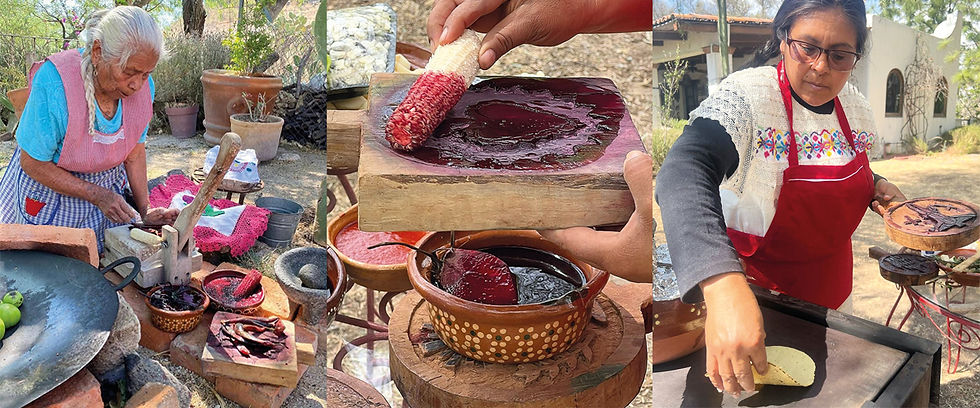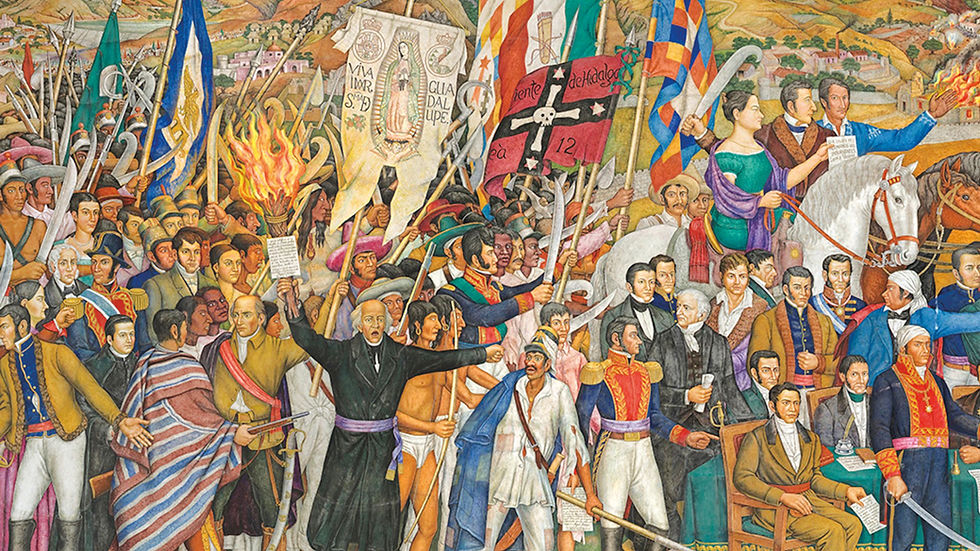Indigenous People Day: Recognizing And Honoring The Rights, Tradition And Cultures Of Indigenous People
- Camie Fenton
- 6 ago
- 3 Min. de lectura

By Natalie Taylor
International Day of the World's Indigenous Peoples is celebrated on August 9th. Established by the United Nations, it recognizes and honors the rights and cultures of indigenous peoples worldwide. Approximately 476 million indigenous people live in 90 countries around the world, with at least 70 different indigenous populations in México. In San Miguel de Allende and its environs, Otomíes represent the vast majority of the natives who were the original re- sidents of these territories.
The identity of any people is their language and traditions. No ethnic group can survive if those are taken away; all that remains then is memories, which slowly fade away. A population without its culture, without its language, is lost forever. This is one of the greatest challenges that faces indigenous people everywhere, and so it is for the Otomí population of the Bajío region.
The Bajío, literally “the lowlands,” is a misnomer. A better description would be “the plains up in the mountains,” because that is exactly what the region is: a large arid-to-semiarid plateau high above sea level. San Miguel de Allende, for example, is located in the Bajío, at an altitude of 6,200 feet. The Otomí are among the oldest inhabitants of central México; their agricultural culture, based on the cultivation of maize, beans, squash, and chili peppers, goes as far back as 2000 BCE. Initially, to evade Spanish rule, many Otomíes migrated north and west, until their leaders sealed mutually beneficial agreements with the European conquerors. They then joined the Spanish and helped them create settlements in the Bajío region, including the areas around San Miguel.
The Otomi have remained in this area, maintaining their language and traditions in small enclaves. However, with each passing year, more and more of their culture disappears, partly because it is based on oral traditions and not on written records, and because many of the young people move out of the communities they were born into. One of the most accessible and pleasant parts of any culture is its gastronomy. Food well prepared overcomes the boundaries of language; it is a natural way to interact with strangers. A meal offered is a universal gift of friendship. Laura Ramírez Infante lives in La Cruz del Palmar, a small community approximately 25 kilometers northwest of San Miguel. Laura, who is Otomí, learned cooking from her family and has dedicated herself to preserving her people’s ancestral cuisine. In and around her community, many women specialize in unique dishes using ancient techniques and plants as their ancestors have done for millennia.
Some of the most unique products are “ceremonial tortillas,” because aside from being food, they are used as offerings during festivities, and as symbols of respect and gratitude. What distinguishes them from regular corn tortillas is the stamped decorative elements. They are both tasty and lovely to look at.
The Otomi women prepare their own moles—a very complex sauce that takes hours to make. They also have their own atoles—uniquely Mexican hot beverages based on corn that can be flavored with other ingredients, such as chocolate or fruit. These are usually served during the cold season. Some of the ingredients used are unfamiliar to outsiders. One such example is quelites, a wild variety of seasonal green herbs collected in the fields. Another example is the fruit of the mesquite and the pirul (pepper tree). The bean-like pods of the former contain a sweet, flashy pulp. The latter has red berries that taste a bit like pepper corns. Although these plants may be unusual, their tastes are similar to those we are familiar with. The quelite, for example, tastes a bit like spinach and could easily be adapted to European recipes. Some other ingredients are completely unknown and may perhaps not be looked upon favorably, such as chicatanas (flying ants) or chapulines (grasshoppers). However, if one is non-judgmental and has an adventurous palate, they could be something to try since many consider them delicacies.
These recipes have been handed down through generations and are part of the oral tradition. Recording them as written recipes would guarantee their spread and preservation.
One of Laura’s dreams is to bring these women to San Miguel in an organized event where they could each showcase their cooking, introducing these special flavors and techniques to the community at large. It is a dream that we hope will materialize because it would introduce us all to amazing ancient traditions and tastes.
Laura is available on WhatsAppat: 415 168 1676
.png)








Comentarios